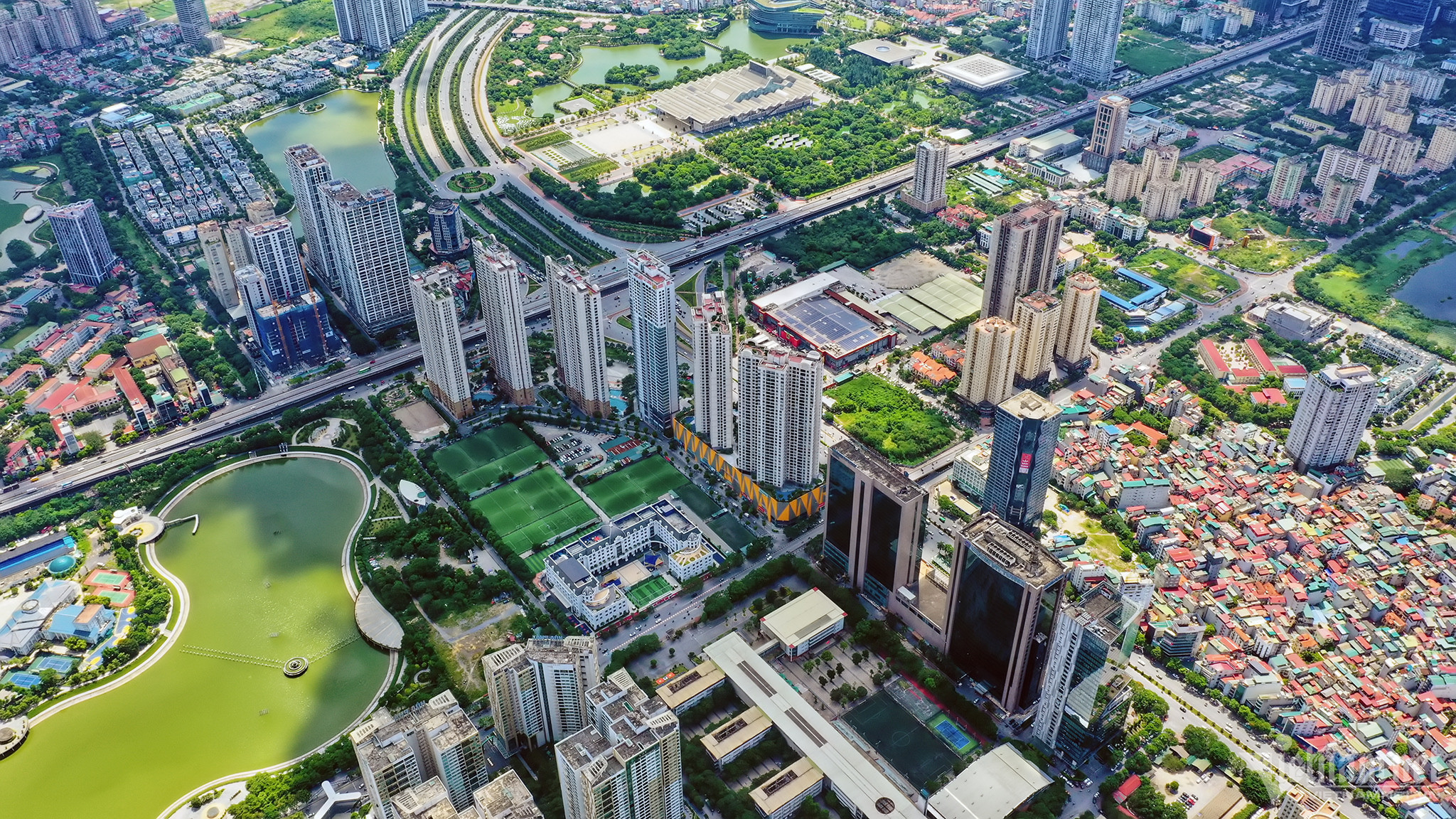
According to the Hanoi Transport Department, at the end of 2023, the city had 8 million transport vehicles, including 1.1 million cars, 6.7 million motorbikes and 1.2 million means of transport from other cities and provinces.
The department director, Nguyen Phi Thuong, said while the transport infrastructure grows by 0.5 percent per annum, the number of private vehicles grow by 4-5 percent per annum, or 10 times higher than the infrastructure growth rate.
This explains why the transport infrastructure can hardly keep pace with the private vehicle growth rate.
When assessing the policy impact of the amended Law on Capital City, the Ministry of Justice pointed out that the imbalanced development between means of transport and infrastructure conditions lead to traffic congestion, especially in rush hours.
The congestion is estimated to cause a loss of VND23.3-27.9 trillion to Hanoi, or $1-1.2 billion a year.
Hanoi authorities decided that developing urban railways is the critical solution, emphasizing that it must be the ‘backbone’ of public passenger transport.
The railway network is expected to not only change the face of the city and settle traffic congestion, but also help change people’s habit of using private vehicles.
Hanoi has figured 10 urban railway routes, including 9 key routes and one remaining route which connects satellite cities, with total length of 417.8 kilometers. Of the total, 75.6 kilometers of railways will go underground. The total investment capital is estimated at $40 billion.
However, to date, only 13 kilometers of urban railways have been built, belonging to the 2A Cat Linh – Ha Dong route, while the 12.5 kilometers of Route No 3 that links Nhon and Hanoi Station are still under execution.
The Cat Linh – Ha Dong elevated railway, which runs from Cat Linh in Ba Dinh District to Ha Dong District, was the first urban railway put into operation in the country, in November 2021.
With total investment of $886 million, funded by Chinese ODA (official development assistance), the line is 13 kilometers long with 12 stations and 13 trains. Each train can run at the speed of 80 kilometers per hour and has four carriages capable of carrying 900 passengers.
Hanoi Transport Department’s director Nguyen Phi Thuong confirmed that only 6.5 percent of planned urban railway projects have been implemented.
Hanoi’s Vice Mayor Duong Duc Tuan said it takes 10-15 years on average to build the two railway routes of Nhon - Hanoi Station and Cat Linh - and put them into commercial operation.
“Suppose that we develop the 10 urban railway routes with that pace, we will have to spend 100 years to complete the projects,” Tuan warned.
Specific mechanism needed
According to transport experts, one of the biggest difficulties in railway development is lack of capital. If Hanoi wants to cut the time needed to build railways, it needs a specific regime to mobilize $40 billion of capital.
Thuong believes that TOD (transit oriented development) is the solution to capital mobilization that Hanoi needs.
The local transport department has asked the People’s Committee to propose that the National Assembly complete the legal framework related to TOD model in the Land Law, Law on Planning, Investment Law, Construction Law and Law on Real Estate Business.
Dang Huy Dong, chair of the Institute of Planning and Development Research, commented that 200 kilometers of urban railways by 2035 is a reasonable goal.
However, he warned that the plan is feasible only if Hanoi has a mechanism specifically tailored for the capital city, with the outstanding regulations in planning, land use and financial mechanism. The regulations must be closer to regimes in countries which have successfully developed TOD railways.
Experts all say that if the network of railways can be developed as planned, Hanoi’s GDP growth would continue to be a two-digit rate.
Tran Van Tuong